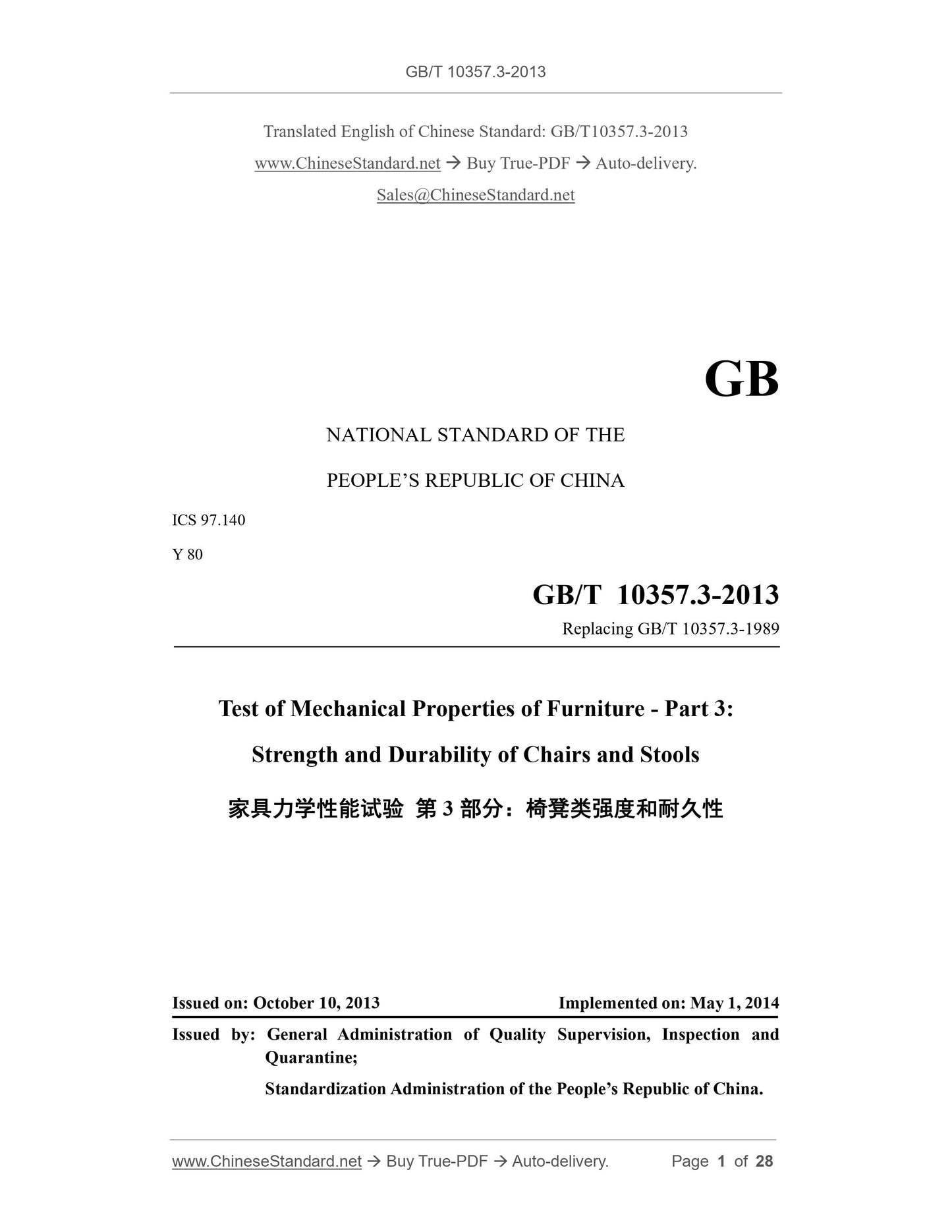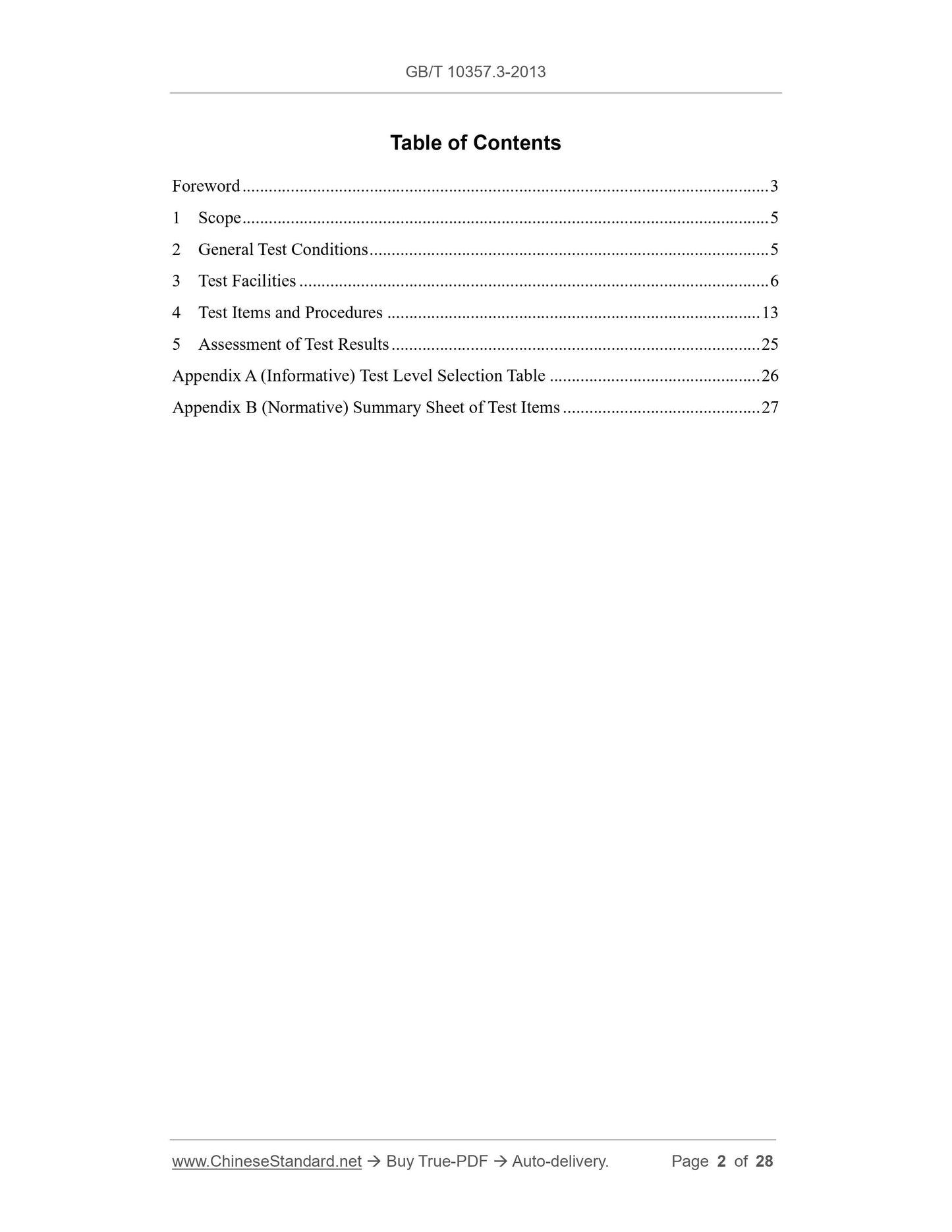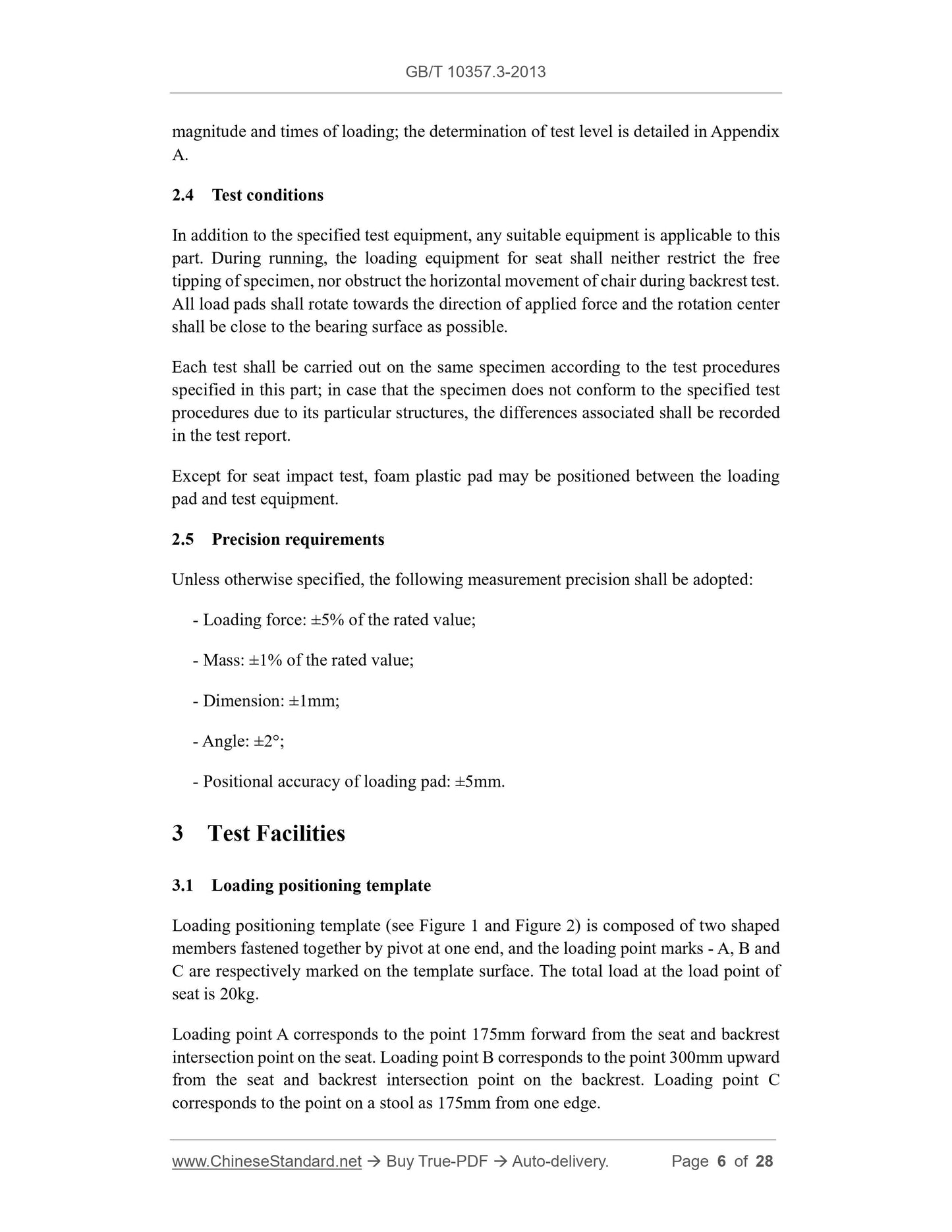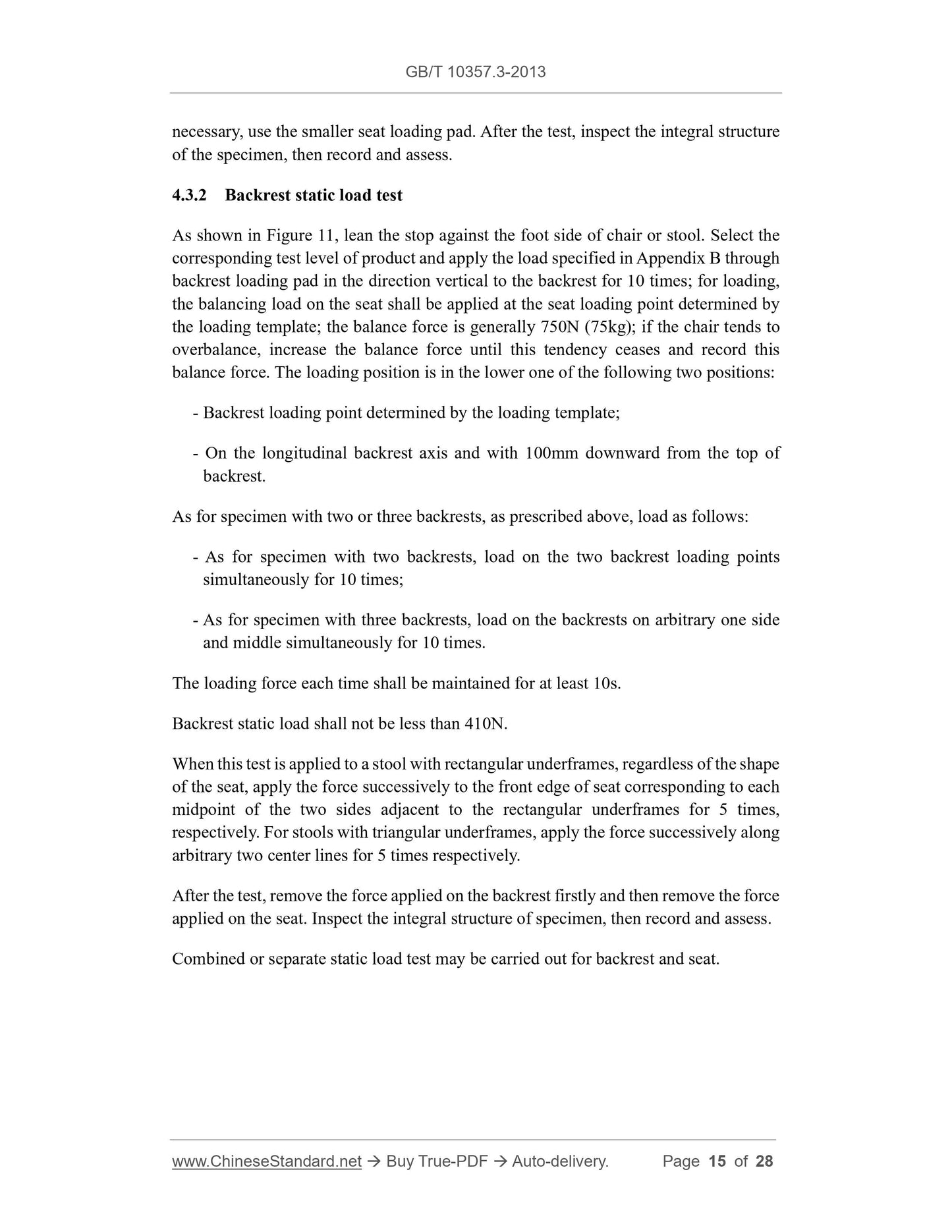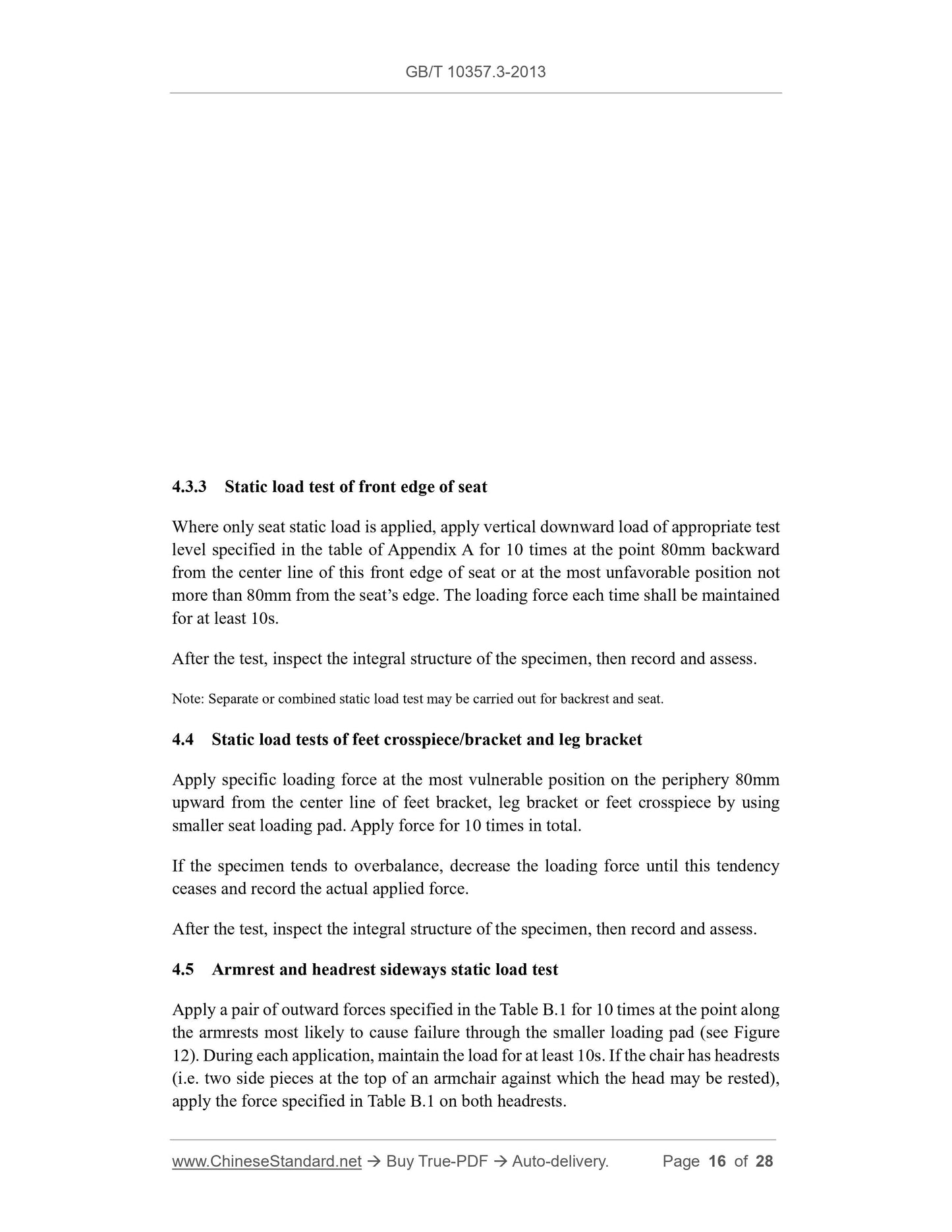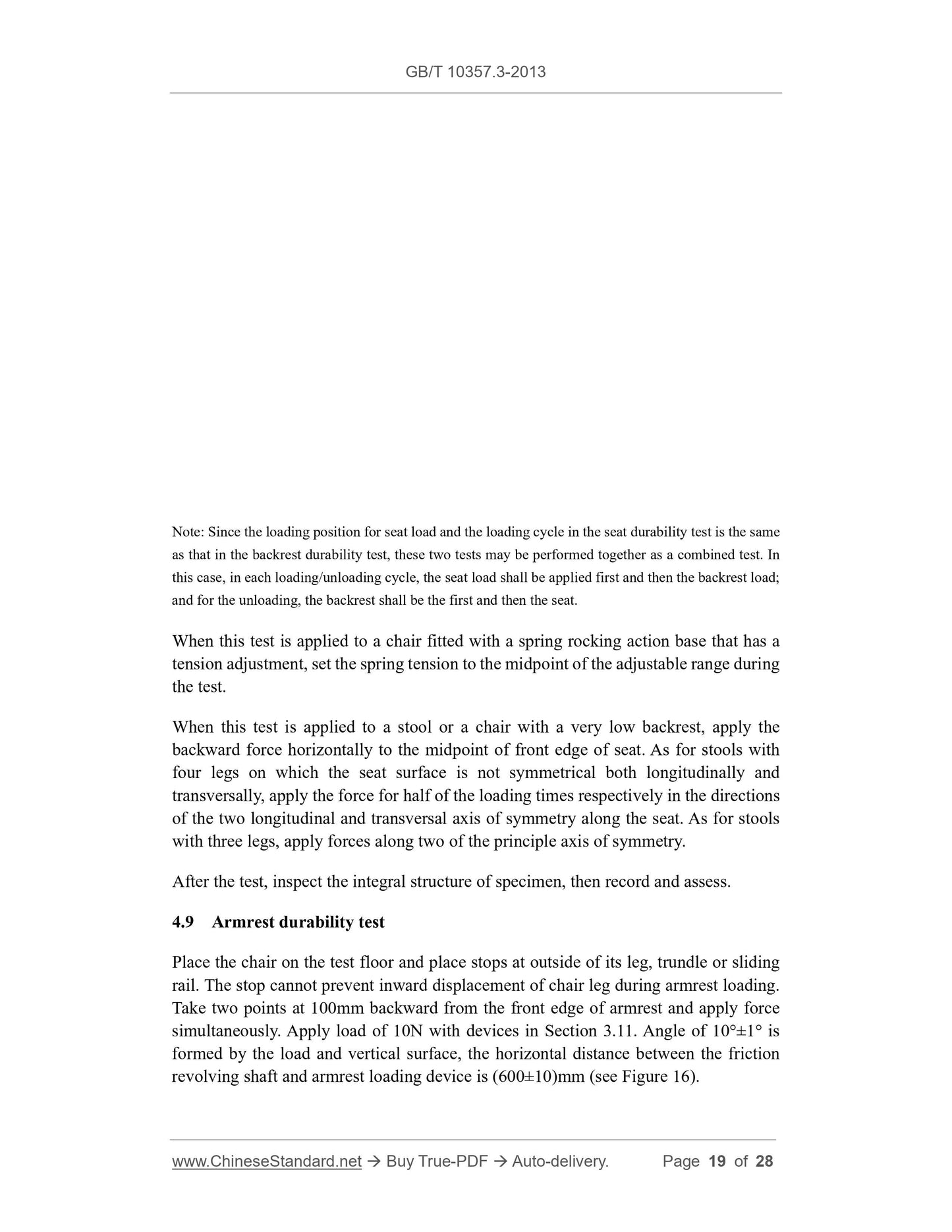1
/
of
9
www.ChineseStandard.us -- Field Test Asia Pte. Ltd.
GB/T 10357.3-2013 English PDF (GB/T10357.3-2013)
GB/T 10357.3-2013 English PDF (GB/T10357.3-2013)
Regular price
$125.00
Regular price
Sale price
$125.00
Unit price
/
per
Shipping calculated at checkout.
Couldn't load pickup availability
GB/T 10357.3-2013: Test of mechanical properties of furniture -- Part 3: Strength and durability of chairs and stools
Delivery: 9 seconds. Download (and Email) true-PDF + Invoice.Get Quotation: Click GB/T 10357.3-2013 (Self-service in 1-minute)
Newer / historical versions: GB/T 10357.3-2013
Preview True-PDF
Scope
This Part of GB/T 10357 specifies test methods for determining the strength anddurability of various chairs and stools.
This Part is applicable to various chairs and stools used in household, hotel and
restaurant.
This Part is not applicable to revolving chair, Children's chair as well as chairs and
stools made of ceramic, vine and osier.
Basic Data
| Standard ID | GB/T 10357.3-2013 (GB/T10357.3-2013) |
| Description (Translated English) | Test of mechanical properties of furniture -- Part 3: Strength and durability of chairs and stools |
| Sector / Industry | National Standard (Recommended) |
| Classification of Chinese Standard | Y80 |
| Classification of International Standard | 97.140 |
| Word Count Estimation | 22,284 |
| Older Standard (superseded by this standard) | GB/T 10357.3-1989 |
| Regulation (derived from) | National Standards Bulletin No. 20 of 2013 |
| Issuing agency(ies) | General Administration of Quality Supervision, Inspection and Quarantine of the People's Republic of China, Standardization Administration of the People's Republic of China |
| Summary | This standard specifies: all kinds of chairs, stools strength and durability test methods. This standard applies to: home, hotels, restaurants and other occasions a variety of chairs and stools furniture. This standard does not apply to swivel chairs, chi |
Share
